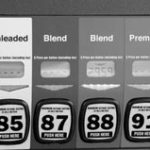It never ceases to amuse me that most of us will get positively anal about the lubricants and maintenance standards we insist on in our Harleys. Folks will change expensive oil twice as often as necessary, using precious compounds of petrochemical fluids that cost way more than the stuff typically poured into their daily driven BUVs (Behemoth Utility Vehicles)—and damn the expense! It’s all for the good of the hog! Further, as witnessed in these pages and plenty of other places, they will labor over and debate what constitutes the “best” lubricants like medieval English lords over the pedigree of pit bulls. But “gawd ferbid” they pay a penny more than they absolutely must for the other vital fluid that Harleys must have to perform their best for the longest time—namely gasoline. That’s a mistake. The simple fact is fuel is as important as lubricants, and possibly even more arcane in its constitution.
We left off last time with the notion that, since the days of Kettering and leaded fuels, octane is the most important consumer criterion for gasoline selection. Well, let’s see about that, shall we?
In spite of Ethyl Corporation’s introduction of tetraethyl lead, typical mid-1920s gasolines were rated at 40–60 octane. Because sulfur in gasoline inhibited the octane-enhancing effect of the alkyl lead, sulfur content was restricted. By the 1930s, the petroleum industry had determined that the larger hydrocarbon molecules (kerosene) had major adverse effects on the octane of gasoline, and were developing consistent specifications for desired properties. (So, back then, each tank of gas was like a box of chocolates: You never knew what you were gonna get! Hence, low-compression, nonfuel-fussy engines were the order of the day.) By the 1940s cataly- tic cracking was introduced, and gasoline compositions became fairly consistent between brands during the various seasons. (There was a war on, after all, and the Germans had better base oil stocks to refine than we did. Until we caught up, the side effects of our situation were developments like supercharging.)
The 1950s saw the start of the increase of the compression ratio, requiring much higher-octane fuels. Lead levels were increased, and some new refining processes (such as hydro-cracking), specifically designed to provide hydrocarbon’s components with good lead response and octane, were introduced. (This culminated in pump octane as high as 104, and the best performance gas ever, in the ’60s.) Minor improvements were made to gasoline formulations to improve yields and octane until the 1970s—when unleaded fuels were introduced to protect the exhaust catalysts on cars that were also being introduced for environmental reasons. From 1970 until 1990 gasolines were slowly changed as lead was phased out. In 1990 the Clean Air Act started forcing major changes on gasoline, and these changes will continue into the 21st century.
A complex recipe
Modern fuel is blended according to various recipes, for various regions and different climates and seasons of the year. The active ingredients for the stuff include about 200 different hydrocarbons, each with a spine of between four and 12 carbon atoms. One of them, isooctane, consists of eight carbon and 18 hydrogen atoms (C8H18) and is exceptionally resistant to exploding spontaneously when exposed to the heat and pressure found inside a typical combustion chamber. Another, n-heptane (C7H16), is highly susceptible to such self- ignition.
These two compounds are therefore used to rate the knock resistance of all gasoline blends. A gasoline “recipe” that resists knock the way a mixture of 87-percent isooctane and 13-percent n-heptane would is rated at 87. Racing fuels with octane ratings over 100 resist self-ignition even better than pure isooctane. For the rest of us at the pump, octane ratings for regular-grade fuel range from 85 to 87, midgrades are rated 88 to 90, and 91 and higher is premium. (You find higher than 91 octane mostly in the east. We “mountain” Westerners are stuck with no higher than 91 due to the effects of thin air on combustion.)
Therefore, fuel is a man-made composition, only partially made up of what we think of as gasoline, and a rather complicated one at that. It’s no surprise that a lot of the elements in fuel are there only to achieve octane ratings. But—the octane and the energy content in modern fuels aren’t the same thing—not even close. More- over, octane is a tricky concept, since even on the surface of it there are two ratings methods, RON and MON, which are averaged out, then posted on the pump at the local station. Most folks don’t have the faintest idea what they mean or how they are determined. (One helpful tidbit would be to determine the sensitivity in your choice of fuel—if you can even find out what the two octane numbers originally were. A difference of much more than 10 points between the MON and RON ratings would likely be too touchy about rapid changes in engine conditions to be a good choice for traditional Harley motors.)
In other words, as important as these numbers might be, they are not an exact science (and a fairly suspect guideline for H-Ds) even today. The combination of engine and vehicle and the variables in fuels can mean that your scoot may run fine on one brand of (say) 89 octane, but not on another. An interesting point here: Right in the owner’s manual, H-D recommended 87 “pump” octane (or better) for Evolution engines, yet Twin Cams get a specification of not less than 91. (Over a scant few percentage points of difference in mechanical compression ratios?) There is also an entire page in the Twinkie book devoted to fuels (not gasolines) like; RFG (reformulated), ethanol (oxygenated) and California’s very own MTBE (methyl tertiary butyl ether), which exists because of the state’s ban on MMT (methylcyclopentadienyl manganese tricarbonyl). MMT is a competitor to MTBE and ethanol in some countries, but not here, since it’s been deemed too toxic. Another tidbit: In the bid to save us from our “fuelish” selves by pulling the lead out of fuel, we arrive at a juncture wherein unleaded cannot be proven to be less lethal than leaded was! At least before it’s burned. (After, thanks to catalytic converters, is a slightly different scenario, though the votes aren’t in worldwide since cats aren’t used everywhere unleaded is.)
Regular or premium?
Ah! Burning! That’s the thing! Exploding is not what we want our fuel to do, since that’s sorta where we came in on this whole knock/octane issue in the first place. What we want is a nice controlled burn, which actually speaks to the energy content of the fuel more than simple knock resistance.
With that in mind, it may surprise you to know that the energy content of a gallon of regular is virtually identical to that of premium. Theoretically—you can get as much power and efficiency (i.e. fuel economy) out of one as the other—if your engine is not knocking it! At least that’s the automotive argument for not wasting money on fuel the engine can’t benefit from. I submit it’s not quite that simple. Automobiles (and lots of motorcycles) these days have sophisticated engine management systems that simply reduce power rather than allow knock. Not so true with primitive Harleys. (Even the newest EFI H-Ds are nowhere near as able to fend off knock as they should be. Harley’s method of ion-sensing at the spark plugs may sound good, but it ain’t like the vibration-sensing piezoelectric element in your four-wheeler after all!)
There’s also the other loose cannon—namely heat. Consider that virtually all other modern power plants can control it with liquids (as well as computer-controlled ignitions), yet Harleys can’t do nearly as well with their cooling medium—air. Consider that most of the heat generated by high-performance engines in cars is a result of compression alone, yet a Harley engine can run too hot (or too cool) simply because of outside temperatures. Does it make sense to assume that somewhat suspicious octane ratings alone will ensure a long, trouble-free life for your motor? How about those other desirables, such as power and economy? I submit that using the best quality fuels with the highest octane ratings, lowest sensitivity and as much energy content as you can get, are the way to go (in all senses) with traditional Harley engines. I believe that, far from tossing money away on qualities you don’t need in a fuel, with careful selection of your gas you are in fact buying some of the cheapest insurance there is for your engine; particularly, if your engine is not stock.
Mind you, although premium fuel does not necessarily pack more energy content than does regular, it still allows more aggressive engine designs and calibrations that can extract more of the power available from each gallon of gasoline. It’s like the stuff was made for high-performance Harley motors— or for those who want more miles per gallon out of the motor. It’s possible to have both, you know. In spite of the prevailing notion about premium being a waste of money, as long as the engine won’t “knock” a diet of regular, there’s an opposite argument to be made here. Heresy? Well, let’s see…
Fuel for thought
If your engine burns premium gasoline, you can use that extra horsepower either: 1) to accelerate more quickly to the next red light or 2) to cover more miles for each gallon burned. As often as not, in the latter scenario, the extra cost of premium is balanced by the gain in mileage. Premium tends to have a fixed price “delta” of 20 to 30 cents/gallon over regular gas. When regular gas was $1/gallon a few years back, premium was $1.30. Now that regular is $3.00, premium is $3.30. Same delta in cents/gallon, but as a percentage the price differential has fallen from 30% to 10%.
If given more horsepower, many/most riders will use it accelerating harder. No increase in mileage expected there. But if you drive mildly, you can also use that extra horsepower to consume less fuel and do the same amount of work.
Let’s say you are running with regular gas and the engine’s OK with it. You accelerate from 0–60 using the max power your engine can produce using regular. Acceleration is “A.” Now using premium fuel, repeat the 0–60 acceleration. To match the previous acceleration rate (A), you won’t need to use full throttle (the engine is producing more power). That partial throttle setting is using less fuel to do the same amount of work. Therefore you get better mileage—at least while performing acceleration “tasks.” Because an engine that produces more power for a given rate of fuel intake will do more work.
Even cruising, alternating between tanks of regular and premium and actually calculating your economy instead of estimating, you might see a near 20 percent improvement in gas mileage running quality premium versus regular. Because, even though premium and regular gasolines both have almost the same energy density, premium allows an engine to compress it more greatly before igniting it, leading to greater efficiency in converting fuel to kinetic energy.
Even (perhaps especially) older Evos and Shovels with compression ratios that allow for regular gas, should consider (higher octane) premium as they age. Carbon deposits and build-up on pistons and in combustion chambers can create hot spots, leading to knock problems—without the benefit of any sort of knock sensing—no real means of dealing with it via engine management.
Fuel selection (and education) gets more critical as time goes on for yet another reason: Since adding alcohol to current fuels is the plan “du jour,” it might also interest you to know that a mere 3 percent by weight (typical these days and going higher) means that there’s only about 70 percent as much energy content in fuel as there was before the alcohol was added. Put another way, you pay more to get less and/or use more to get the same results with oxygenated or reformulated fuel. I’m not sure I’d call that progress, but as long as you can’t knock it, it’s still a gas!























